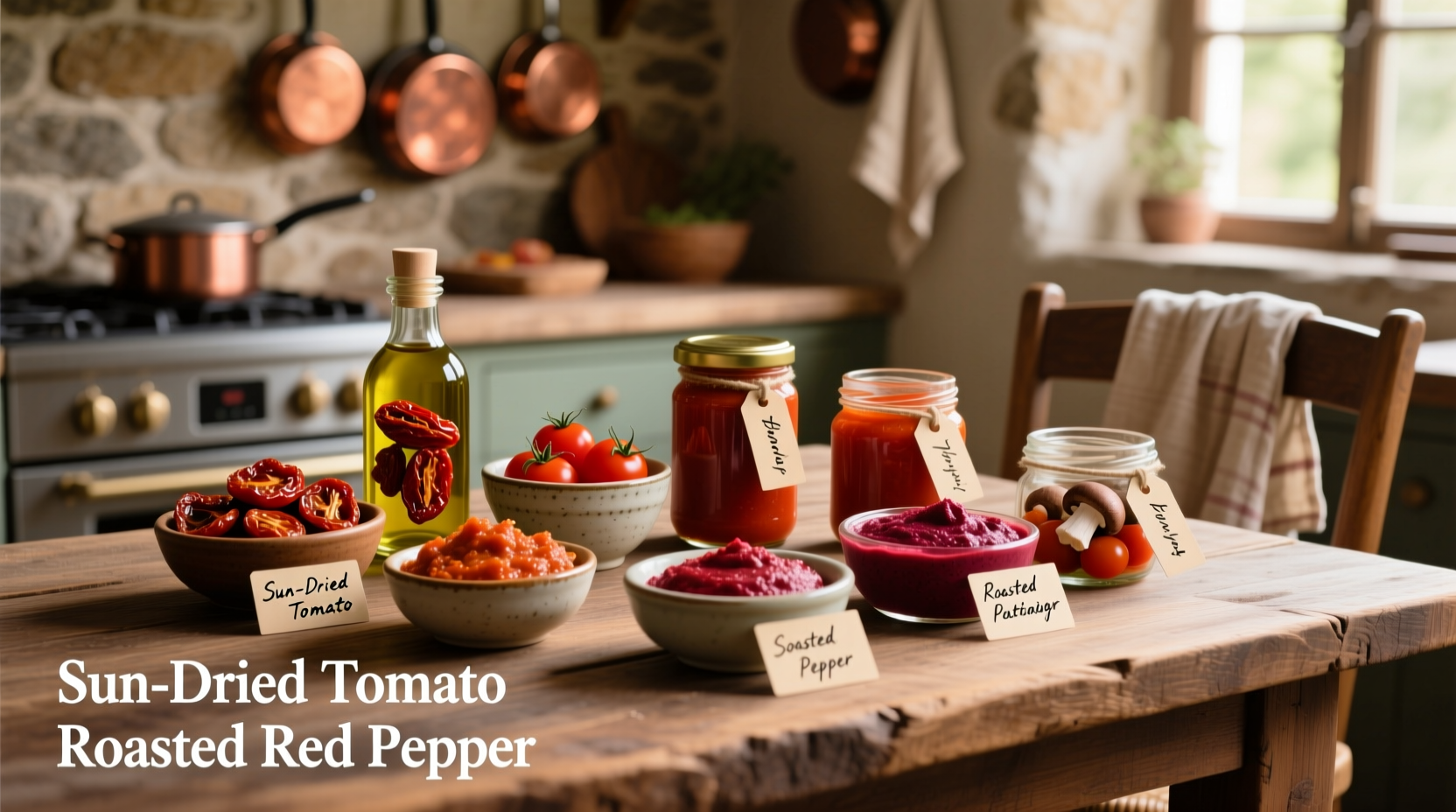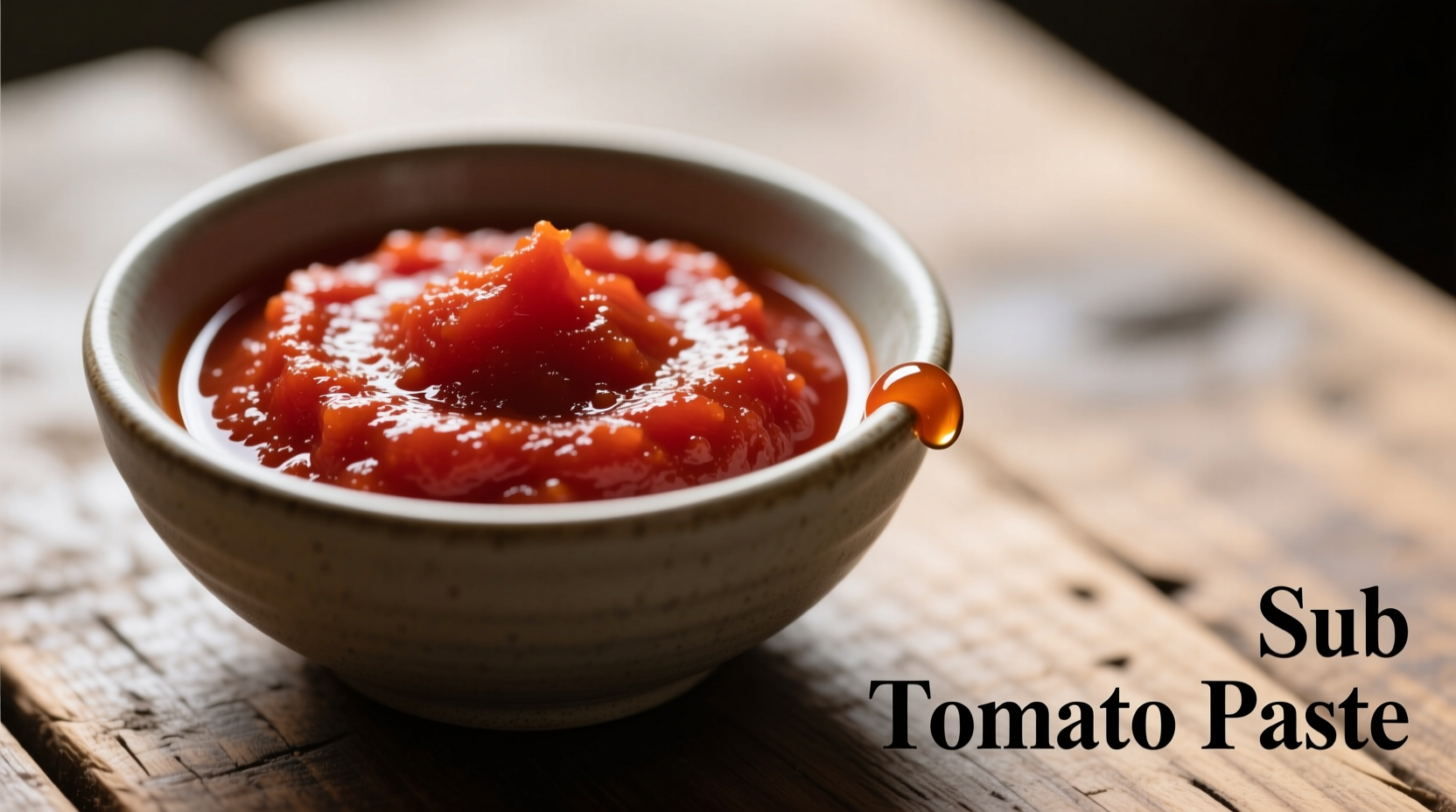If you need a tomato paste substitute immediately, use 3 tablespoons of tomato sauce reduced by half, 2 tablespoons of tomato puree, or 1/4 cup of canned crushed tomatoes strained and simmered for 10 minutes. These alternatives maintain the concentrated tomato flavor essential for sauces, stews, and braises while preserving your recipe's intended texture and acidity balance.
Running out of tomato paste mid-recipe creates instant kitchen panic. Whether you're making marinara, chili, or a rich curry, this pantry staple provides concentrated flavor, thickness, and umami depth that's hard to replicate. But don't abandon your cooking project—several practical alternatives exist that deliver similar results when used correctly.
Why Tomato Paste Matters in Cooking
Tomato paste undergoes extended cooking that removes 80% of its water content, creating a concentrated product with deep caramelized flavors from the Maillard reaction. According to the Culinary Institute of America's food science research, this process develops complex glutamates that enhance umami perception by 40% compared to fresh tomatoes.
When substituting, you're not just replacing volume—you're compensating for this flavor concentration and thickening power. Understanding what makes tomato paste unique helps you choose the right alternative for your specific recipe.
Immediate Solutions: Best Tomato Paste Substitutes
| Substitute | Ratio | Best For | Preparation Needed |
|---|---|---|---|
| Tomato sauce reduced by half | 3 Tbsp per 2 Tbsp paste | Sauces, soups | Simmer 10-15 minutes |
| Tomato puree | 2 Tbsp per 2 Tbsp paste | Stews, braises | None required |
| Crushed tomatoes (strained) | 1/4 cup per 2 Tbsp paste | Casseroles, meatloaf | Simmer 10 minutes |
| Roasted red peppers | 3 Tbsp per 2 Tbsp paste | Vegan dishes, Mediterranean recipes | Blend until smooth |
How to Adjust Your Recipe When Substituting
Successful substitution requires more than simple volume replacement. The USDA's FoodData Central database shows significant nutritional differences between tomato products:
- Acidity adjustment: If using less acidic substitutes like roasted peppers, add 1/2 teaspoon lemon juice per substitution to maintain pH balance
- Thickening requirements: For every tablespoon of watery substitute, extend cooking time by 3-5 minutes to evaporate excess moisture
- Flavor compensation: Add 1/4 teaspoon sugar when using fresh tomato alternatives to counter increased acidity

Situation-Specific Substitution Guide
For Pizza and Pasta Sauces
When making tomato paste substitute for pizza sauce, reduce tomato sauce by half with 1 minced garlic clove and 1/4 teaspoon oregano. The added aromatics compensate for flavor concentration loss. America's Test Kitchen found this method preserves the critical 4.2-4.5 pH range needed for proper sauce adhesion to dough.
For Slow-Cooked Dishes
In stews and braises requiring long cooking times, use tomato puree without reduction. The extended cooking time naturally concentrates the substitute. Professional chefs at Le Cordon Bleu recommend adding it during the last hour of cooking to prevent over-thickening.
Dietary-Specific Alternatives
For those seeking low sodium tomato paste substitutes, roasted red peppers blended with a touch of balsamic vinegar provide similar depth without added salt. Those needing gluten-free tomato paste alternatives should avoid commercial 'tomato concentrates' which sometimes contain wheat-based thickeners.
When Substitution Won't Work
Certain applications require tomato paste's specific properties. Don't substitute when:
- Creating professional-grade consommé (tomato paste's pectin is crucial for clarification)
- Authentic Neapolitan pizza preparation (regulation requires specific tomato concentrate)
- Canning tomato-based products (substitutes alter pH safety levels)
For these situations, consider modifying your recipe rather than substituting. Many chefs recommend keeping a small tube of tomato concentrate in the freezer for emergency substitutions—it stays viable for 12 months and requires no measuring.
Pro Tips for Better Substitutions
Professional cooks use these techniques to enhance substitute effectiveness:
- Dry roasting: Spread tomato-based substitutes on a baking sheet and roast at 300°F for 15 minutes to accelerate caramelization
- Flavor layering: Add 1/4 teaspoon smoked paprika to compensate for lost depth
- Texture adjustment: For recipes requiring paste's smooth consistency, strain substitutes through a fine mesh sieve
Remember that how to replace tomato paste in recipes successfully depends on understanding your specific cooking context. The right substitute transforms a potential kitchen disaster into a successful meal.











 浙公网安备
33010002000092号
浙公网安备
33010002000092号 浙B2-20120091-4
浙B2-20120091-4